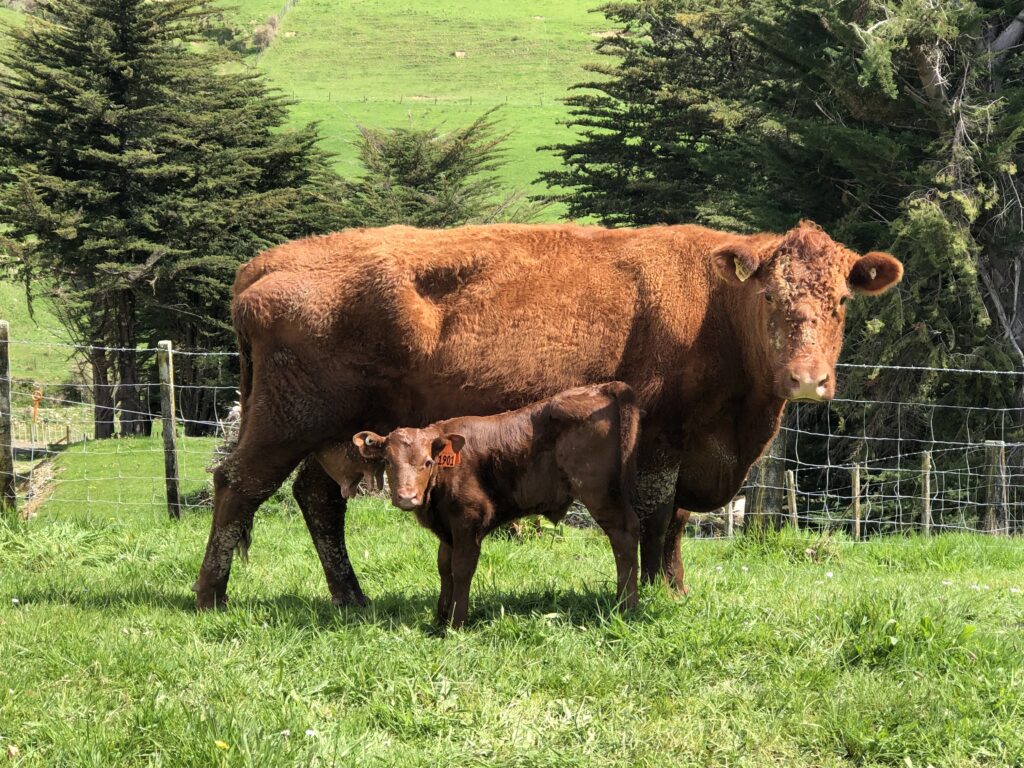Red Devon cattle were initially used as dual purpose animals but today their sole function is to produce top quality beef. They have qualities that are of great value to the modern commercial beef and dairy industries. In todays economic climate with increasing farm running costs and increased cost of feed with changing weather pattens worldwide, operating a more efficient unit is becoming paramount if one is to survive. Red Devon cattle have always been regarded as one of the most efficient breeds available and this has been proved by numerous cattle trials throughout the world, some dating back hundreds of years.
With the worldwide swing back towards more natural better tasting food, because of health and traceability issues, and the superior eating qualities of grass-fed beef, the Red Devon is very quickly becoming more recognised as the breed of the future. Nowhere is this more so than in America at present, with herds the width and breadth of the country infused with New Zealand Red Devon grass fed genetics. These cattle are so docile and produce well marbled, tender and succulent beef. Gourmet Beef produced naturally off grass.
Red Devons have a broad genetic diversity and a range of maturity patterns that enable them to perform in a wide variety of situations. However, like all other breeds, they have general traits that are a feature of that particular breed.

They are still listed as a rare breed in New Zealand and some other countries. Fortunately a worldwide interest in the breed, and renaissance is now taking place, with continually record breaking prices being paid for the cattle.
Red Devons are probably the most docile cattle, and easiest to handle, of all the breeds in the world, but this fact, plus being listed as a rare breed, does not mean they are only lifestyle cattle or only farmed on small blocks. This breed when farmed commercially in large herds as in Brazil and Australia proves itself to be the most efficient breed of cattle available today, whatever the conditions.
